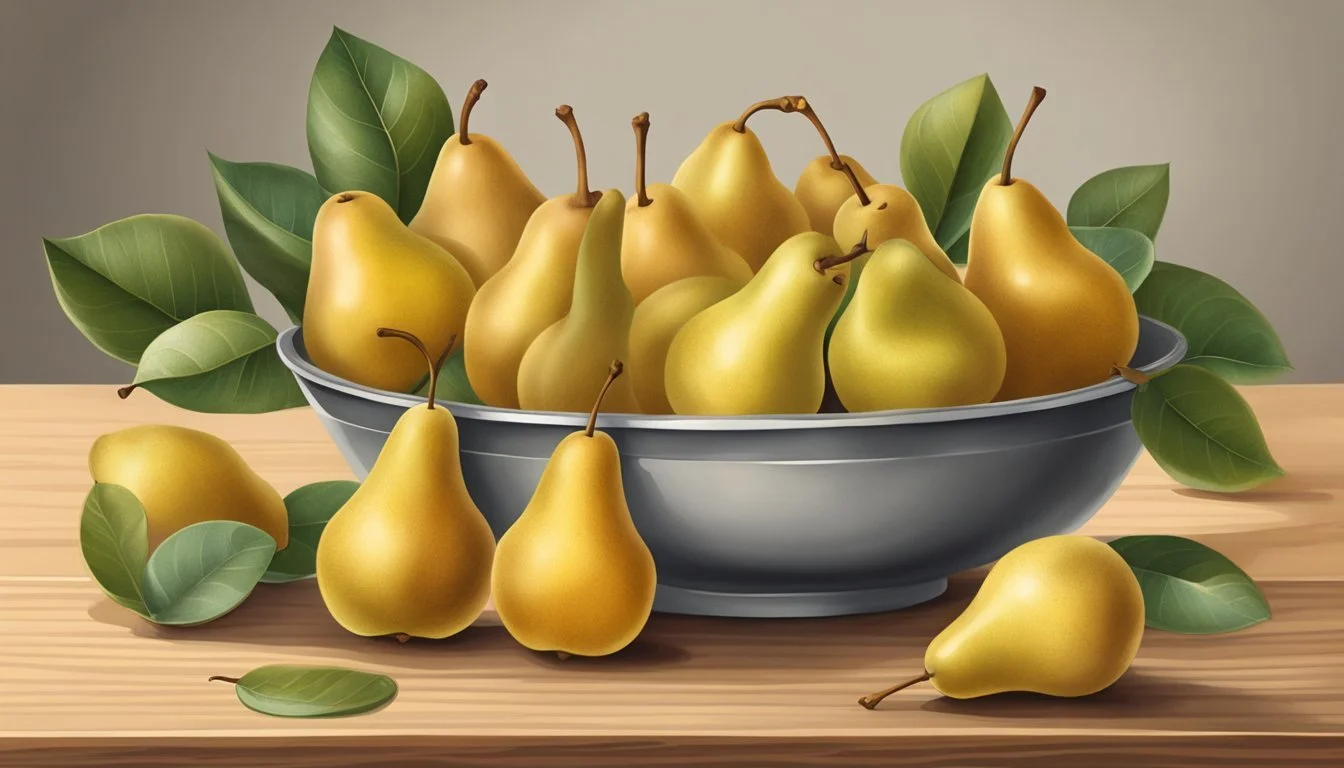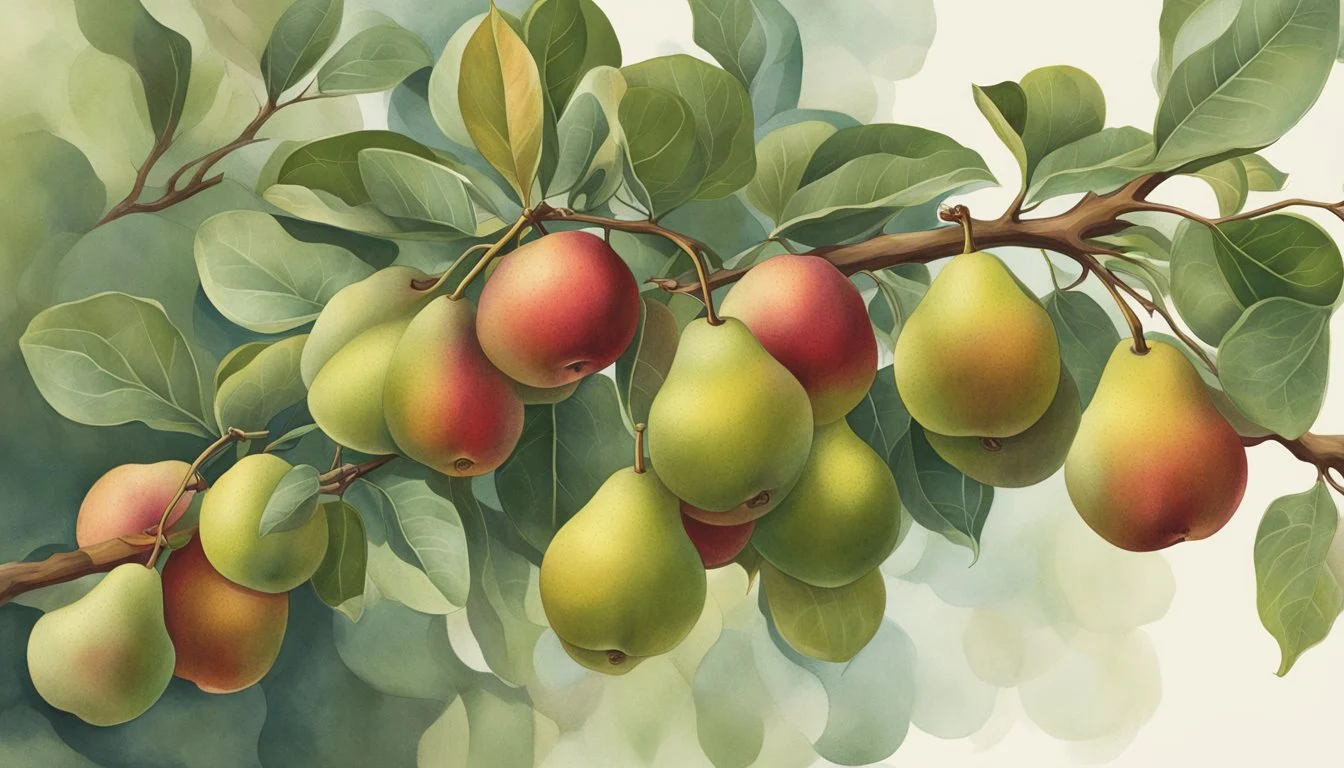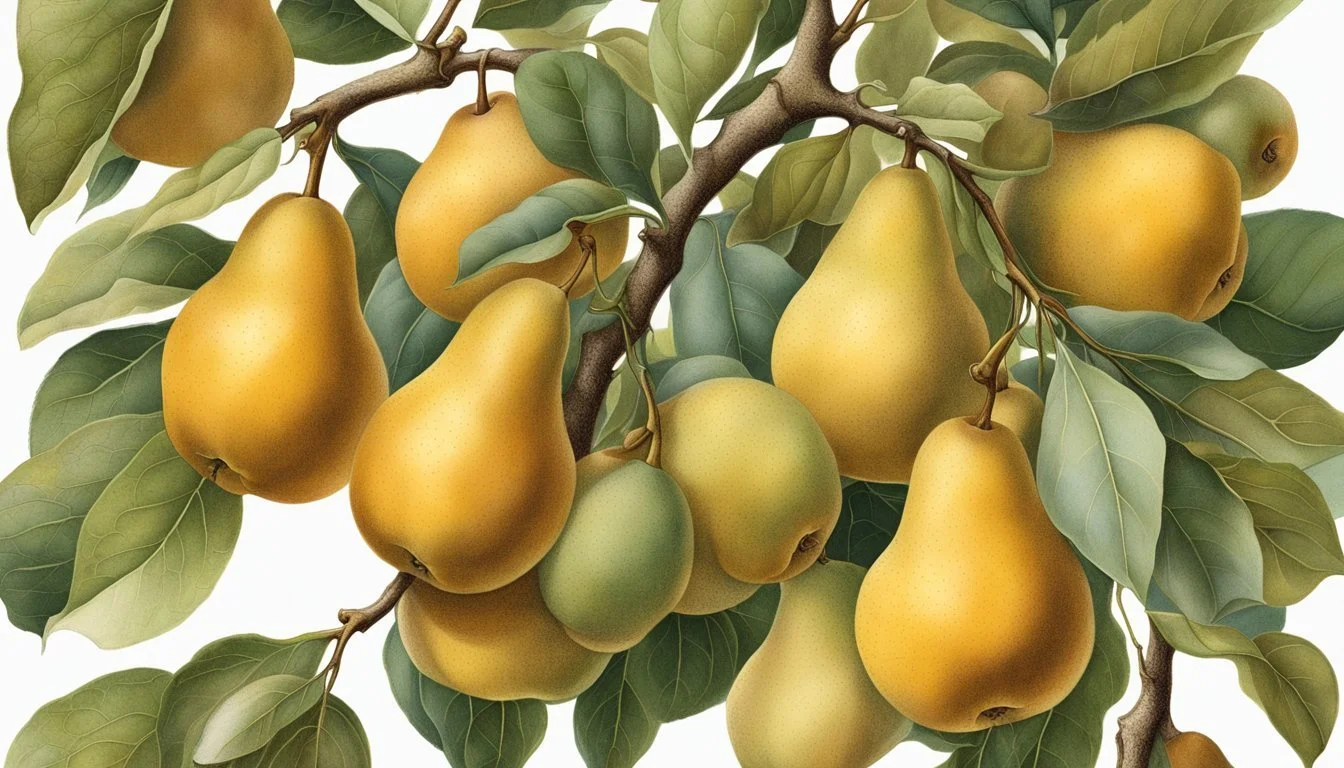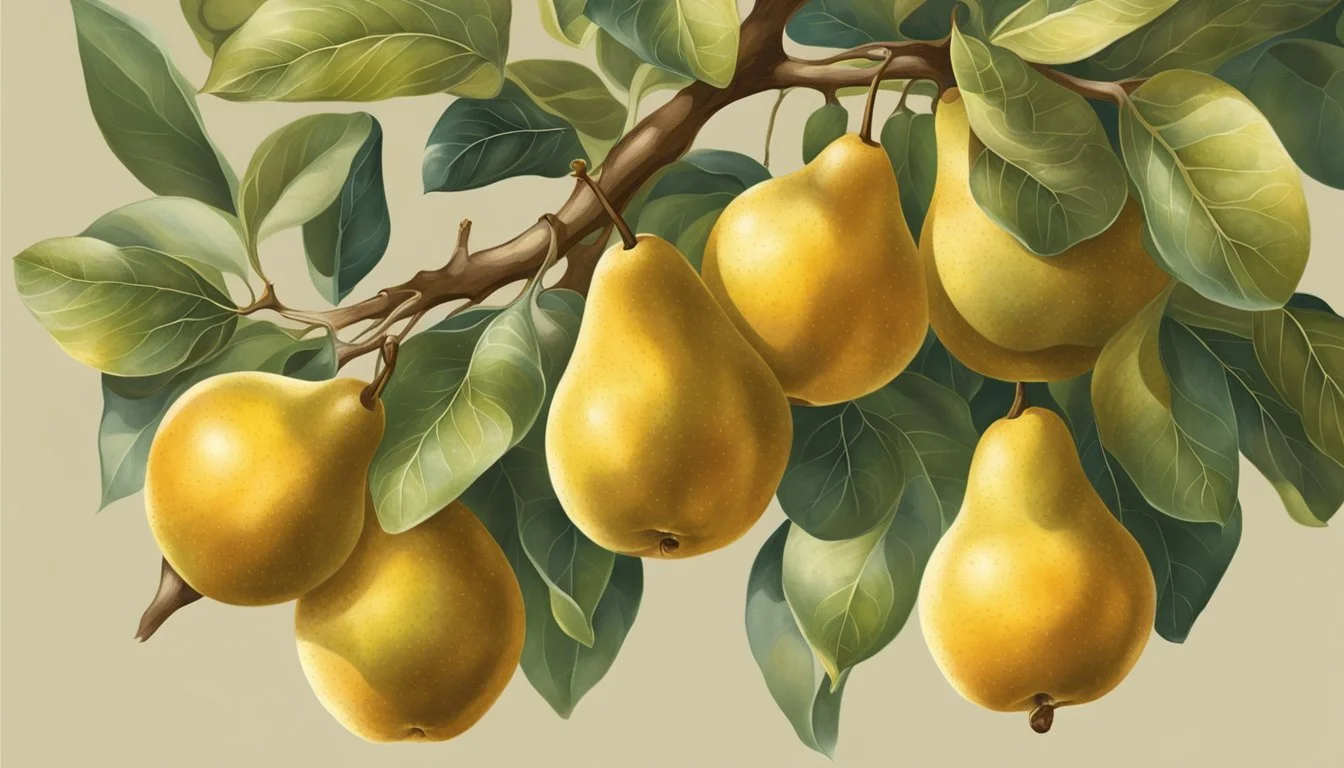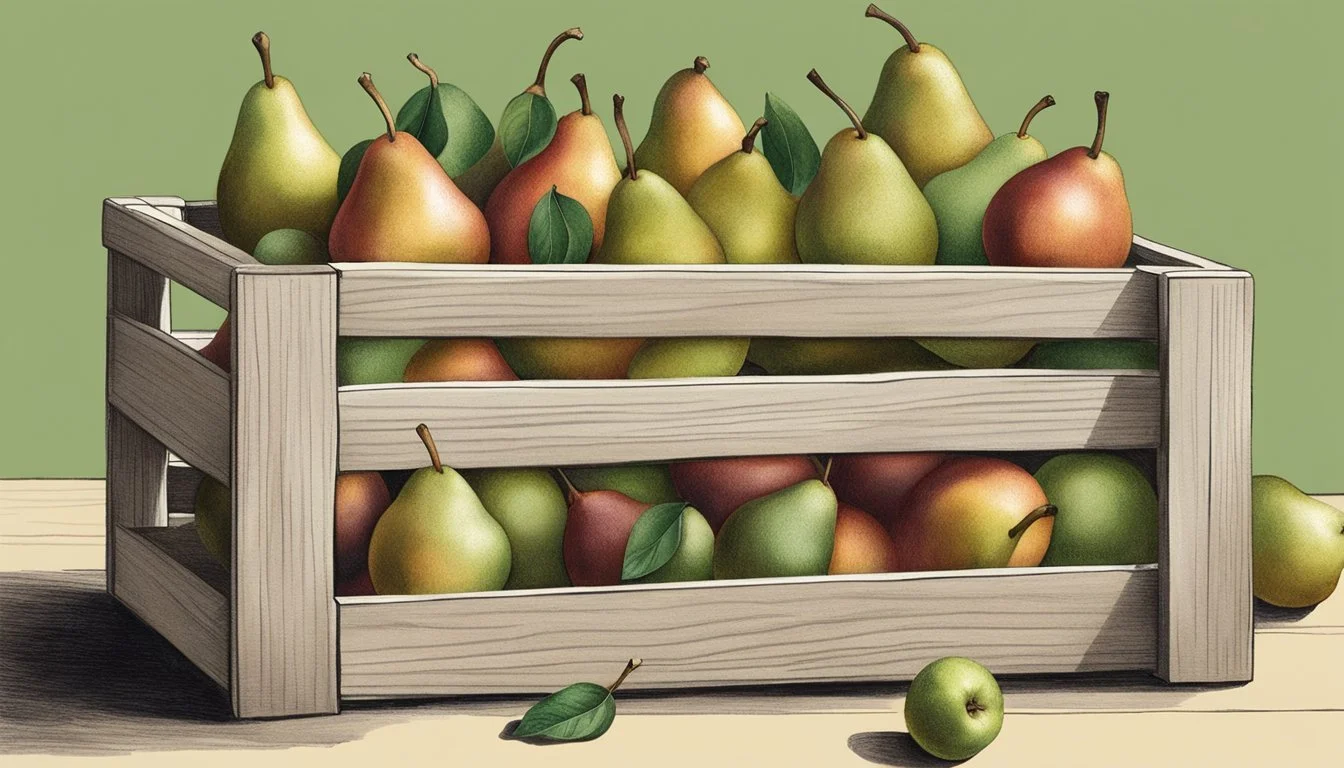How to Tell if Seckel Pears Are Ripe
The Definitive Ripeness Checklist
Determining the perfect moment to enjoy a Seckel pear, often referred to as a sugar pear due to its sweet flavor profile, involves more than meets the eye. Recognized for their signature greenish-yellow color with a hint of red blush, Seckel pears are a unique variety due to their size and concentrated sweetness. Notably smaller than most pears, they present a challenge when it comes to discerning ripeness, as the usual visual cues may not be as prominent.
For those eager to savor the rich, sweet taste of these pears at its peak, understanding the subtle changes in texture and color is crucial. Unlike some fruit that softens uniformly, Seckel pears' ripeness is best tested by a gentle squeeze near the neck. A slight yield to pressure indicates they're ready to be enjoyed. Moreover, when harvesting, it is ideal to look for a firm texture, as the pears will continue to ripen off the tree if stored in proper conditions.
Key Takeaways
Check the neck of a Seckel pear for slight softness to determine ripeness.
Harvest Seckel pears when firm and allow them to ripen in a cool, dark place.
Store Seckel pears properly post-harvest to enjoy their optimum flavor and texture.
Understanding Seckel Pears
The Seckel pear is a distinctive fruit cultivar, notable for its small size and sweet flavor. Originating in the United States, this pear variety has a history that traces back to a discovery near Philadelphia. It is believed to have originated from a wild seedling, making it an American original in the world of fruit trees.
Characteristics of Seckel Pears:
Size: Smaller than most pear varieties.
Shape: Often rounder with a chubby appearance.
Skin: A distinctive greenish-yellow with a red blush; turns to a golden-yellow as it ripens.
Taste: Exceptionally sweet, often referred to as "sugar pears."
In terms of cultivation, Seckel pear trees have two primary forms:
Form: Standard
Height: Up to 20 feet
Width: 13 feet wide
Form: Dwarf
Height: Half the size
Width: Half the width
When planting Seckel pears, growers should choose a location that accommodates their mature size. The soil should be loamy, ensuring adequate nutrient absorption and drainage. These trees require patience and care, as do many fruit trees, both for the health of the tree and the quality of the fruit produced.
Optimal Conditions for Seckel Pear Ripening
To achieve the perfect ripeness in Seckel pears, specific conditions are essential. This section provides detail on these factors, including climate, soil, and cultivation practices, ensuring optimal ripening of Seckel pears.
Climate and Soil
Seckel pear trees thrive in a climate that provides a distinct change of seasons, with ripening facilitated by the warm days of late summer transitioning into early fall. They require well-draining soil, rich in organic matter, to prevent standing water, which can be detrimental to the tree's health. The ideal soil pH for Seckel pears ranges from 6.0 to 7.0 for optimal nutrient uptake.
Pruning and Training
Pruning is vital for the Seckel pear tree, both for its health and to promote even ripening. During the dormant season, careful pruning shapes the tree and ensures adequate sunlight and airflow, which are crucial for uniform ripening. Training young trees by spreading the branches can prevent overcrowding, which in turn supports better fruit production and ripeness.
Fertilization and Watering
A balanced fertilization program is key, focusing on the development of a robust root system capable of supporting the tree during dry spells. Watering should be consistent, as fluctuations can affect the ripening process. Mulching helps retain soil moisture and regulate temperature, providing a stable growing environment that is conducive to optimal fruit ripening.
Harvest Timing
Seckel pears are typically ready for harvest in late summer to early fall. The pears should be firm but yield slightly when pressed. If left to ripen on the tree, they may become overly soft. It is often ideal to harvest when slightly underripe and allow them to come to perfect ripeness off the tree in a cool, dark place.
Physical Characteristics Indicating Ripeness
When it comes to determining the ripeness of Seckel pears, there are several physical attributes to examine. These characteristics are reliable indicators of whether the fruit is ready to be savored for its optimal taste and texture.
Color and Appearance
Seckel pears are distinct for their greenish-yellow skin with a red blush. As they reach ripeness, the skin's green hue turns to a golden-yellow color, and the red blush becomes more pronounced. Observing these color changes is essential in identifying ripe Seckel pears.
Texture and Firmness
A ripe Seckel pear will possess a specific texture—slightly soft upon gentle pressure. Particularly, the neck of the pear is the best area to test; if it yields just a bit under thumb pressure, it indicates ripeness. In contrast, the rest of the pear should be firm but not hard.
Aroma and Stem
Finally, aroma is a telltale sign of a ripe Seckel pear, emitting a sweet, fruity fragrance that becomes more noticeable as the fruit matures. The stem, too, can aid in assessing ripeness—when ready to harvest, the stem should allow the pear to be twisted or lifted from the tree with ease, signaling that the fruit is at peak ripeness for consumption.
Taste Profile of Ripe Seckel Pears
When it comes to the taste profile of ripe Seckel pears, they are distinguished by their exceptionally sweet flavor, often described as honey-like. These small pears pack a surprising punch of sweetness, making them highly sought-after for fresh eating and culinary use. The flavor of a fully ripe Seckel pear is complex, offering subtle notes of vanilla which, when paired with their natural sweetness, creates a delightful and rich taste experience.
Seckel pears also possess a slight spice undertone that complements their sweetness, adding depth to their overall flavor profile. Their dense, creamy flesh, when ripe, delivers this intricate blend of sweet, vanilla, and spice nuances with every bite.
The following points summarize the taste profile of ripe Seckel pears:
Sweetness: Seckel pears are known for their intense sweet flavor, more so than many other pear varieties.
Honey-like quality: The sweetness is comparable to that of honey, providing a rich and mellow taste.
Vanilla notes: A hint of vanilla adds complexity to the sweetness of Seckel pears.
Subtle spice: An understated spice note adds an additional layer to the flavor, enhancing the pear's profile.
If one enjoys fruit flavors that combine sweetness with intricate aromatic notes, a ripe Seckel pear will not disappoint. Their unique taste profile sets them apart from other pear varieties and can be a delightful addition to fruit salads, desserts, or simply enjoyed on their own.
Picking and Harvesting Seckel Pears
Picking Seckel pears at the right time and in the proper manner is essential for ensuring peak flavor and texture. The following guidelines will aid in identifying the optimal harvest period, the correct picking technique, and recognizing the signs of overripeness.
When to Pick
Seckel pears are generally ready for harvest in late summer or early fall. Unlike some fruits, pears, including Seckel, ripen off the tree. It's crucial to pick them when they are mature but still firm.
Timing: Monitor pears from late summer as the window for picking begins.
Color Change: A transition from greenish-yellow to a golden-yellow hue indicates maturity.
How to Pick
Harvesting Seckel pears involves a delicate touch to avoid bruising and damaging the fruit. Proper technique helps ensure the fruit’s longevity and ripeness post-harvest.
Gentle Twist: Rotate the pear upward to release the fruit from the stem.
Lift Method: Support the pear in the palm and lift it gently to detach it from the branch.
The picked pears should be firm to the touch with no soft spots. After picking, store Seckel pears in a cool, dark place to ripen fully.
Signs of Overripe Pears
Pears that have been left too long on the tree or have overripened during storage may show clear signs of being overripe.
Soft Texture: Overripe Seckel pears feel soft when squeezed gently and may have mushy spots.
Skin Blemishes: Look for excessive wrinkling or dark spots that indicate decay.
Post-Harvest Handling and Storage
Proper post-harvest handling and storage of Seckel pears are crucial for maintaining their quality and extending their shelf life. Understanding the right conditions for storage, methods to extend ripeness, and ways to prevent spoilage are key to enjoying these pears at their best.
Storing Conditions
Seckel pears should be stored at a temperature of around 30 degrees Fahrenheit (-1 degree Celsius) with 85 to 90% humidity to delay ripening. It's important to ensure that the temperature does not fall below this range to prevent damage from freezing. Conversely, temperatures above this range can cause the pears to ripen too rapidly.
Ideal Storage Conditions: 30°F (-1°C), 85-90% humidity
Ripening Temperature: Room temperature (60-70°F)
Extending Ripeness
To control the ripening process, Seckel pears can be moved from cold storage to a warmer environment. Ripening typically takes between three to ten days at room temperature. One can expedite the ripening process by placing the pears in a paper bag with ethylene-producing fruits like apples, bananas, or avocados. The ethylene gas released by these fruits naturally speeds up ripening.
Expedite Ripening: Place in a paper bag with ethylene-producing fruit
Ripening Duration: 3-10 days at room temperature
Preventing Spoilage
Monitoring the pears for signs of spoilage is essential. Overripe pears may become too soft and lose their characteristic juicy texture, accompanied by an overpronounced aroma. If spoilage is evident, it is best to discard the affected fruit to prevent it from affecting others. Store Seckel pears separately from strong-smelling foods to prevent aroma absorption.
Overripe Signs: Excessive softness, strong aroma
Spoilage Prevention: Discard affected pears, store away from strong odors
Usage of Ripe Seckel Pears in Culinary Ventures
Ripe Seckel pears are a versatile ingredient known for their sweetness and rich flavor. They enhance various culinary creations, from fresh consumption to intricate baked goods.
Fresh Eating and Snacking
Seckel pears, with their bite-sized form, are perfect for fresh snacking. Their inherent sweetness and juicy texture make them an excellent addition to salads or as a complement to cheese platters. They can be sliced or served whole, offering a convenient and healthy snack option.
Canning and Preserving
The small Seckel pear is an ideal candidate for canning and preserving due to its size and firmness. Preserved pears can be spiced or pickled, maintaining their shape and texture well. They are commonly canned in light syrups or used to create pear jams and jellies, which capture their sweet flavor for year-round enjoyment.
Preservation Method: Canning in Syrup
Description: Seckel pears are canned in a sugar syrup, often with added spices like cinnamon or nutmeg.
Preservation Method: Pear Jams & Jellies
Description: Their natural pectin content makes them suitable for making clear, flavorful preserves.
Baking and Desserts
Ripe Seckel pears' sweet and dense flesh is suited for baking and desserts. They can be baked into tarts, pies, and cakes, or poached to create a sophisticated, syrupy treat. Their small size also means they retain their shape beautifully when cooked, making them an attractive topping or centerpiece for various pastries and sweets.
Baked Goods: Pies & Tarts
Description: Their flesh softens beautifully when baked, complementing the flaky textures of crusts.
Baked Goods: Poached Pears
Description: Poaching in wine or spices highlights their natural sweetness and adds depth of flavor.
Tips for Growing and Caring for Seckel Pear Trees
Cultivating a Seckel pear tree requires meticulous attention to soil condition, watering habits, pruning methods, and nutritional needs to ensure health and optimal fruit production.
Soil and Water Requirements
Seckel pear trees flourish in loamy soil, with a preference for well-draining conditions to prevent root rot. Soil pH should ideally range from 6.0 to 7.0. These trees require consistent moisture, especially during the dry spells in the growing season. One should aim to provide 1 to 2 inches of water weekly, depending on rainfall, to maintain a balance where the soil is moist but not waterlogged.
Pruning and Tree Training
Pruning is essential for the Seckel pear tree's growth and fruit production. One should commence pruning as soon as the tree is planted, creating a strong structure that can support the weight of the fruit. A central leader system is advisable, where one retains a main vertical branch and select three to five outward-growing branches to form the tree's scaffold. Pruning should be done in late winter when the tree is dormant.
Nutrients and Mulching
Fertilizing Seckel pear trees generally commences after the first year of planting. An annual application of a balanced 10-10-10 fertilizer is beneficial, applied in the spring as the buds begin to show. Mulching is another key aspect; a layer of organic mulch 2 to 3 inches thick around the tree base will help to retain soil moisture and moderate temperature extremes. One must take care not to pile the mulch against the trunk to prevent disease and rodent damage.
History and Background of Seckel Pears
The Seckel pear holds a unique position among pear varieties, as it is often recognized as a truly American variety. Legend suggests that Seckel pears originated as a wild seedling in the vicinity of Philadelphia in the early 1800s, distinguishing them from other pears typically derived from European cultivars. Their discovery near Philadelphia is a point of pride, as most other common American pears like Bartlett, Anjou, and Bosc have roots in European ancestry.
Seckel pears are esteemed for their distinctive characteristics and their history. They are namesakes of Mr. Seckel of Philadelphia, who was reputedly responsible for popularizing this variety. Early writings sporadically referred to it with the spelling "Seckle," but "Seckel" has endured as the standardized nomenclature.
Aspect: Origin
Detail: Near Philadelphia, early 19th century
Aspect: Other Names
Detail: Seckle (historical)
Aspect: Significance
Detail: Believed to be an original American varietal
Notable for its small size and exquisite flavor, the Seckel peaks at less than 3 inches in both length and width, showcasing a finer grain than that of its European counterparts. Its diminutive stature belies a rich, sweet taste, making it a prized choice for pear enthusiasts. As with many fruit trees, the Seckel pear demands attentive care and patience throughout its growth and harvesting period.
Distinguishing Seckel Pears from Other Varieties
When it comes to identifying Seckel pears, their bite-sized, petite stature is the primary characteristic that sets them apart from other pear varieties. They are considered the smallest of the commercially cultivated pears. Here is a brief comparison of Seckel pears with other common pear varieties:
Shape: Seckel pears are rounder than most pear varieties, including popular ones like the Bartlett or Bosc, which tend to be more elongated.
Size: Seckels are significantly smaller and are often referred to as "sugar pears" because of their dense sweetness.
Texture: The skin of a Seckel pear is often thicker with a dark red color frequently accompanied by a white blush, unlike the smoother skin of Anjou or Bartlett pears.
In terms of sweetness, Seckel pears are recognized for a rich flavor profile that exceeds the subtle sweetness of larger varieties like Anjou and Bartlett. Their unique taste coupled with their firm texture makes them a favorite for both fresh consumption and for use in desserts.
Comparatively, the Bartlett pear, which is one of the most common varieties, is typically more elongated and has a classic pear shape with a distinctive curve at the neck. The Bartlett's thin skin turns from green to yellow upon ripening. Bosc pears, another common variety, are known for their long necks and russeted skin, which is quite different from the Seckels' appearance.
In summary, while other pears present a variety of shapes and sizes conducive to different uses, the Seckel pear stands out due to its small size, round shape, and notably sweet taste.
Frequently Asked Questions About Seckel Pears
What are the signs of a ripe Seckel pear? To determine ripeness, one should check the Seckel pear's skin and feel. A ripe Seckel pear usually turns from greenish-yellow to a golden-yellow with a more pronounced red blush. They should also give slightly to pressure near the stem end without being mushy.
How does one tell if a Seckel pear has matured on the tree? When maturing on the tree, Seckel pears will begin to detach easily. Testing by gently lifting or twisting the pear by the stem is a good method. A mature pear should come away without much resistance.
What's the best way to ripen Seckel pears after harvesting? After harvesting, Seckel pears can be left at room temperature to ripen further. They will typically soften, especially near the neck, signaling that they are ready to eat. For best results, store the pears in a cool, dark place.
When should one harvest Seckel pears from fruit trees? Seckel pears are commonly ready for harvest in late summer or early fall. Care should be taken not to bruise the fruit during harvesting. Inspecting the color and ease of detach from the Seckel pear tree can help determine the right time.
How should one store Seckel pears after picking them? To prolong freshness, store Seckel pears in a refrigerator. They can last for several weeks when kept at a cool temperature. Avoid storing with other fruits that emit ethylene gas, like apples or bananas, as this can accelerate the ripening process.

